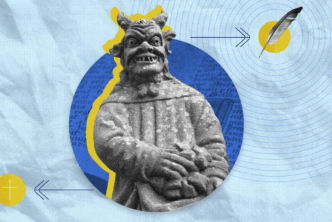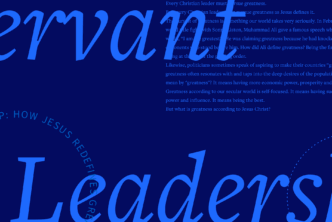Textual criticism is a hot topic among biblical scholars. The views on the discipline’s profitability span the extremes of being of crucial importance for serious scholarship and the opposing view of being hostile towards the revered doctrines of inerrancy and the sufficiency of Scripture.
Textual criticism of the Old Testament is perhaps a greater challenge than that of the New Testament due to the distance between the manuscripts extant and the proposed dates of authorship. However, this article seeks to show why text criticism is important for biblical scholars and exegetes of all persuasions.
Emanuel Tov makes the same argument in his seminal text when he states, “Textual criticism has a distinctly practical aspect for biblical exegesis, but as a rule this feature has not been reflected sufficiently in the extant handbooks on textual criticism.”1 This article is an attempt to show the worth of text criticism for exegesis. By approaching the text with an eye towards ascertaining the profitability that textual criticism can shed on historical interpretation, the need for the discipline should become evident.
By observing the text-critical notes of Psalm 91, as well as the history of interpretation, one can see how textual criticism can enlighten one’s understanding of the testing of Christ in the fourth chapters of Matthew and Luke.
Text Critical Observations of Psalm 91
If you open your BHS up in Logos to Psalm 91 you will see a series of hyperlinked notes to the apparatus. Some of these notes will be the kind which have caused the Masorah of the BHS to fall into question. One such example of these questionable notes is the removing or shuffling of words for stylistic reasons; such as found in the last part of verse 4 (enclosed with a superscript b on either side) to verse seven. This move is most likely an attempt to transform two of the three tricolons in the psalm into a bi-colon and a quatrain (or two bi-colons). Other notes, however, will be quite significant such as those that are seen in verse six.
The first textual issue in verse six is that the Gottingen LXX, Syriac and Aquila, have the Greek term ἀπὸπράγματος, which the scribes assert derived from pointing the word מדבר differently, with hireq for qibbuts on the מ, and qamets for segol under both ד and ב. The LXX also has the inclusion of the Greek term δαιμονίου, supposedly from the Hebrew word שד, which is attested in Aquila and Symmachus. How one points the Hebrew text can raise multiple interpretive issues. The MT includes a vowel letter, shureq; while the apparatus opts for tsere. There is a consonantal difference in this particular word as well, with the imperfect of the yod in the MT contrasted with the use of the conjunctive waw for the alternative reading in the apparatus. How one chooses to resolve these issues can significantly impact interpretation.
The goal of this article is not to resolve that issue, but instead seeks to highlight why the issue should be considered. This particular alternative reading did in fact have significant implications on the future interpretation of Psalm 91. This is seen in the Dead Sea Scrolls, future rabbinic literature, and could have also worked its way into the New Testament documents themselves.
As noted above within the critical apparatus of the BHS, there are notes on how the Gottingen LXX, and Aquila and Symmachus, have the inclusion of the Greek term δαιμονίου inferred from the Hebrew word שד. This reading has resulted in Psalm 91 being linked to the ability to ward off demonic oppression, a practice now known as apotropaism.
Before this translation can be dismissed, one must understand the great deal of wealth and influence that the Gottingen LXX has on the field of Old Testament textual criticism. Aquila and Symmachus were both revisionists of the ancient LXX, though Aquila’s work was considered superior to that of Symmachus.2
The fact that both of these revisionists were working from an original Hebrew document gives credence to some form of Hebrew vorlage that translated שד without the shureq as seen in the MT. It is possible that these translation decisions could have derived from comparisons to the kaige recension.
The Gottingen LXX is considered to be more authoritative than the Cambridge edition because of its more recent publication. This allowed for the inclusion of more manuscripts which did not become available until after the Cambridge edition’s publication.
Klein’s work, cited below, is a worthy defense of the value of the LXX for the field of Textual criticism. The LXX is considered second in worth only to the Dead Sea Scrolls. The DSS have been linked to the LXX due to manuscript evidence of a Hebrew vorlage sharing many LXX readings that were previously considered conjecture.
A vorlage is the Hebrew text behind a translation (Greek, Syriac, Arabic, etc.), and the vorlage may be assumed if the translation is sufficiently clear, or it may be validated if later evidence is found through archaeology. This finding of the DSS was able to validate many of the back-translations that were previously posited by LXX scholars in the field of textual criticism as forming the Hebrew vorlage.3
Contextual Considerations
The most critical fragment from Qumran for this particular discussion is 11Q11 (The 11th cave in Qumran’s 11th fragment), commonly known as “Songs to Disperse Demons.”4 The second temple Jewish community believed that there were two main forces of demonic activity: possession and harassment.
Possession was overcome through exorcisms which are detailed in extra biblical accounts, including but not limited to the DSS. Exorcism was seen as a final liberation from demonic oppression.
The second form of demonic oppression was harassment. Demonic temptation and testing, as a form of harassment, were thought to be overcome through apotropaism. Apotropaism is “a preventative measure in which a petition of incantation ensures protection from future demonic harm.”
The two main views of how apotropaism was conducted are described in the works of David Lincicum & Menahem Kister. These two views asserted respectively that this was done through quoting or obeying the Torah.5 The songs of 11Q11 deal with apotropaism.
There are six salvageable columns of different incantations in 11Q11. One incantation is clearly attributed to Solomon (Col. 2, lines 1-12), and the another incantation is attributed to David (Col. 5, lines 4-13).6 The columns in the middle are extremely fragmented, and they may denote separate incantations, or larger parts of any text preceding it.
The sixth column, however, includes the text of Psalm 91. There are many points of continuity between the Songs to Disperse Demons and Psalm 91 worth noting. Many of the texts include a contrast between light and darkness (Col. 2, line 12; Col. 4 line 11 [only darkness is preserved], Col. 5, lines 5, 7 and 10.)
There is also imagery of the 1,000 referred to in Psalm 91 (Col. 3 line 11, referring to 1,000), as well as the idea of the attack during the night by demonic foes (Col. 5, line 5,) and the contrast between the wicked and the righteous (Col. 5, lines 8, 11-13).
Though these correlations with Psalm 91 imply that the psalm served as a future model for apotropaistic incantations, it also proves that these authors viewed demonic oppression as an intrinsic aspect of Psalm 91.
This proves that the scribes and interpreters during the second temple period did not view the text critical note of the LXX as an error of interpretation or translation of the word שד.
Intertextual Considerations
Psalm 91 is quoted partially in Matthew 4:6 when Satan seeks to test Jesus.7 Goldingay remarks that the idea of Psalm 91 being addressed to the king of Israel, similar to Psalm 20, or 121, makes sense on the eve of battle as the king stood in need of rescue and protection.
Goldingay then asserts that this view “adds bite to the tempter’s quoting of the psalm (Matt. 4:6), inviting Jesus to claim promises addressed to the (messianic) king. Yet there is nothing to require reference to the king, and no doubt the promises could be applied to a governor and to individuals.”8
In fact, if the didactic portions of Psalm 91 are to be taken as seriously as those like Sabourin and Briggs would lead us to believe, then it would in fact be just as applicable to any individual who made their refuge in the LORD by abiding in him.9
With the finding and dating of the Dead Sea Scrolls, today’s exegete has another reason to see some extra “bite to the tempter’s quoting of the psalm ” than Goldingay mentions. Since the Qumran community would have been present during the time of Christ, and in the region which Jesus was tempted in, their understanding of Psalm 91 as an apotropaistic psalm may have been a common second temple Jewish understanding.
This understanding of שד was found in the LXX, which was the accessible text to the people of Israel at that time. This has been evidenced by its multiple citations by Jesus and His apostles in later documents. Therefore, one can accept this understanding as a common application of Psalm 91 at the time of Christ.
If this is the case, then Satan is not only telling Jesus that he should put the LORD God to the test by casting himself to the ground, but that his failure to do so would betray his trust in the Hebrew Scriptures which safeguard Him from demonic oppression. Satan is seeking to test Jesus’ interpretation of Psalm 91.
If Jesus is the Davidic Messiah who abides in the Lord, then God should protect him from demonic harassment, and protect him from the harm of falling. Satan is asserting on the basis of Psalm 91’s common interpretation, “If you are the Son of God, throw yourself off this temple, and if God protects you, I will leave you alone.”
History of Interpretation
Joseph Angel shows that Psalm 91 had Talmudic authority for apotropaism. “According to talmudic tradition, Psalm 91 is a potent anti‐demonic psalm (‘shir shel pega’im’ ; b.Sheb. 15b; y. Erub. 10:11). It was particularly popular among medieval Jews, who recited it often for a host of magical purposes.”10
The text is also found multiple times in apotropaic magic bowls and in a Geniza Fragment and Havdala de-Rabbi Akkiva.11 This idea suggests that the original context of the psalm was not, or not only, believed to be a physical battle, but a spiritual battle against demonic forces.
This view of a spiritual and demonic battle is strengthened by Second Temple Jewish literature which is filled with documents that describe actual physical battle. The War Scroll from Qumran is proof that the Qumran community described actual physical battles apart from demonic oppression. Thus, the idea that this psalm was specifically associated with Demonic oppression among the Qumran community is noteworthy.
The apotropaistic value of Psalm 91 is not limited to the views of Hebrew magicians and the Qumran community. The church fathers historically viewed this text in much of the same way.
For example, Augustine accepted the translation of the LXX where verse 6 was understood to be referring to the devil. Augustine quotes the psalm in his Exposition of Psalm 91,
“Nor for the arrow that flies by day, for the matter that walks in darkness, nor for the ruin and the devil that is in the noonday” referring to Psalm 90:6. These two clauses above correspond to the two below; You shall not fear for the terror by night, from the arrow that flies by day: both because of the terror by night, from the matter that walks in darkness: and because of the arrow that flies by day, from the ruin of the devil of the noon-day.”12
Jerome in his Homilies, Number 20, also understood this psalm in demonic terms. He states within his homily on Psalm 90:13
‘For he will rescue you from the snare of the hunters.’ ‘We were rescued like a bird from the fowler’s snare; broken was the snare, and we were freed.’ What snare is this that has been broken? ‘The Lord,’ says the Apostle, ‘will speedily crush Satan under our feet’; ‘that you may recover yourselves from the snare of the devil.’ You see, then, that the devil is the hunter, eager to lure our souls unto perdition. The devil is master of many snares, deceptions of all kinds. Avarice is one of his pitfalls, detraction is his noose, fornication is his bait. ‘And from the destroying word.14
Though this is a small sampling, it is evident that many of church fathers seemed to accept the apotropaistic features of Psalm 91. Therefore the idea of demonic oppression cannot be summarily dismissed from current interpretation due to its long standing within the history of interpretation.
The majority of contemporary scholars however easily dismiss this idea and seem to accept the MT as found in the BHS without giving proper consideration. Those who address the issue only give it a passing nod, if even mentioning it at all.
Conclusion
This brief foray into the psalm’s historical interpretation has proven the need for understanding its historical apotropaistic background. Understanding the apotropaistic background is essential to grasping the full weight of Satan’s testing of Christ.
Christ likely had access to an LXX that included the non-MT reading noted above. Christ did not charge Satan with misunderstanding the psalm’s apotropaistic implications. Christ only rebuked Satan on the idea of testing God’s protection.
This gives further reason for wrestling with this reading as a legitimate possibility for the original text. After seeing how one brief note on a geminate verb can affect the history of interpretation, one is forced to reckon with the importance of Old Testament textual criticism.
If the change of one vowel letter can render such a different interpretation, and both are well attested, how can an exegete (read “preaching pastor” here) say that he has studied the text fully without at least seeking to understand the text critical notes?
Whether one accepts the proposed texts of the apparatus, or rejects them, let us who labor in the word to feed God’s flock do the work necessary to come to as full an understanding as we can. Only after these efforts can we be assured that we have done the work necessary to properly divide the word of truth.
This means we must labor in the original languages and familiarize ourselves with the historical interpretation of the passages at hand and seek to resolve text critical issues. If we do this, I believe we will see an immense benefit in our biblical studies; and that will, in time, profit our congregation.
- Emanuel Tov, Textual Criticism of the Hebrew Bible (Minneapolis: Fortress Press, 2005), 19.
- Ralph W. Klein, Textual Criticism of the Old Testament: From the Septuagint to Qumran, Philadelphia: Fortress, 1974.
- Tov, 3.
- Michael Wise, Abegg Jr., Martin, and Cook, Edward, A New Translation of the Dead Sea Scrolls (New York: Harper Collins, 2005,) 588.
- Michael Morris, “’Apotropaic’ Tactics in the Matthean Temptation,” Journal of Postgraduate Research, Trinity College Dublin, 2014, 137-138.
- Wise, et. al., 588-590.
- For a description on the need for a gloss of “test” instead of “tempt” please refer to my article found here.
- John Goldingay, Psalms: Vol. 3 – Psalms 90-150, (Grand Rapids: Baker, 2008) p. 39.
- See Charles A. Briggs and Emilie Grace Briggs, A Critical and Exegetical Commentary on the Book of Psalms, International Critical Commentary (New York: C. Scribner’s Sons, 1906–1907), 278; as well as Leopold Sabourin, The Psalms: Their Origin and Meaning, (Eugene: Wipf and Stock Publishers, 2010), 379.
- Joseph Angel, The Use of the Hebrew Bible in Early Jewish Magic, Published 9/21/2009 at https://doi-org.ezproxy.liberty.edu/10.1111/j.1749-8171.2009.00167.
- Ibid.
- Augustine. “Exposition on Psalm 91.” CHURCH FATHERS: Exposition on Psalm 91 (Augustine), 4 Aug. 2020, www.newadvent.org/fathers/1801091.htm.
- At the time of Augustine and Jerome the Psalms were numbered differently, reflecting the LXX numbering in the Vulgate.
- Jerome, The Homilies of Saint Jerome (1–59 on the Psalms), ed. Hermigild Dressler, trans. Marie Liguori Ewald, vol. 1, The Fathers of the Church (Washington, DC: The Catholic University of America Press, 1964), 157.





